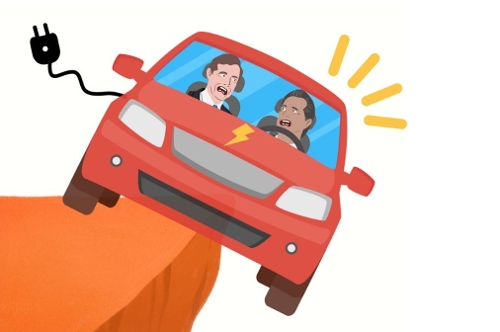
The End of Representative Government and Freedom in Delaware
By David T. Stevenson, Director
Center for Energy & Environmental Policy
Two and a half years after COVID-19 first hit we are still in a state of emergency giving un-democratic power to Delaware's Governor with no end in sight. His executive branch regulators are circumventing our elected representatives to dictate what kind of motor vehicle we can buy and how we power our homes.
Governor Carney's executive decision to join the multistate Climate Alliance that agrees to follow crazy California regulations is about to go into action. DNREC is already drafting regulations to ban the sale of gasoline and diesel-powered cars. Delaware's Department of Natural Resources & Environmental Control (DNREC) basis for this regulation is illegal.
California has completed its regulation on banning the sale of gasoline and diesel-powered motor vehicles by 2035.
In California, by mandate, 35% of new vehicle sales must be either plugin electric vehicles (EVs) or hydrogen-powered by 2026, increasing to 100% in 2035.
Some states that have joined the Climate Alliance have also committed to following California regulations. Most states, including Delaware, joined the Alliance by executive action, not giving their legislatures a chance to weigh in on the issue. In Delaware, last-minute Senate Bill 305 which might have provided legislative cover for this action was shot down in the House but will likely reappear next year.
Why is this so dangerous? First of all, Americans have fought and died for freedom, which includes the choice of what products we buy in a free market economy. The move to EVs will dramatically increase both the price of motor vehicles and electric rates to cover upgrades to the electric grid. Those increased costs will hurt the poor and middle class the most.
The US Energy Information Agency, before recent high inflation rates hit, estimated a 26% of US households were struggling paying electric bills requiring monthly decisions to pay the electric bill or buy food and healthcare.
Some might argue that reducing carbon dioxide emissions is so critical that we must act.
This argument, however, is not factual-based. Multiple studies of cradle-to-grave emissions show little reductions compared to conventional vehicles. EVs are about the worst choice to reduce emissions. Currently, EV batteries are warranted for 100,000 miles or eight years, whichever comes first. Then it's most likely off to the landfill!
Estimates of emission reductions range from zero to about 14 tons over eight years. For perspective, Delaware has a tax on emissions from power plants now costing $14/ton, so the value of emission savings might be $0 to $196 over the life of the vehicle with a price premium averaging $18,000. That's a lousy return.
Think the cost of EVs will come down? Tesla, GM, Ford, and other EV manufacturers have been raising vehicle prices $6,000 to $8,000 higher over just the last month, basically capturing the full value of new federal consumer tax credits for the manufacturers.
There are many more issues with electric vehicles.
- Range drops dramatically in the cold, with some models averaging 30% less range.
- You can't charge during a blackout. Just four days after banning the sale of gas-powered cars by 2035, California asked EV owners not to charge during a peak demand period to avoid crashing the grid.
- Massive spending will be needed for the electric grid and charging infrastructure, with one estimate as high as $5,800 per EV.
- 95% of charging occurs at home or work, so public chargers are used only a few percent of the time resulting in unprofitable, poorly maintained public chargers.
- Lithium battery fires are a real concern and very difficult to extinguish.
The US Energy Information Agency forecasts that only about 13% of the US light-duty vehicle sales will be electric vehicles by 2050.
When the 2050 sales forecast for EVs is only 13%, it's no secret the obvious and only way to increase future demand for electric vehicles is for the government to get involved by mandating and giving out subsidies, aka taxpayers' money.
It is not too late to alert your legislators to stop this attack on your freedom. You may also consider only voting for candidates who will oppose these kinds of regulations.